The Enrollment Marketer
The Higher Ed Marketer's Guide to Social Media Targeting

July 06, 2023

With over 2.96 billion monthly active users, Facebook offers an audience too big for marketers to ignore. But since Facebook changed its algorithm in 2012 and again in 2018, advertisers have noticed a significant decline in their organic post reach. Many are turning to paid ads to get back in the Facebook game.
If you’re paying for ads, you should make sure you’re reaching the most relevant audience with the best possible content. This can seem like a daunting task, especially on a platform with as many users as Facebook. Here are some things to know when navigating the world of Facebook ad targeting.
Facebook offers helpful audience-targeting tools

One of the cool things about Facebook is that you can get as specific as you want regarding your ideal audience. They offer a plethora of options when asking who you want to see your campaign, including multiple demographic and psychographic options. You can narrow down your ideal audience’s location, age, gender, language, interests, and behaviors to fit the potential students you want to advertise to.
Additionally, if you have a list of applicants and their email addresses you can upload them to Facebook and create a “Lookalike Audience” that will target users with similar demographic information and interests. This allows you to reach potential applicants most similar to those who have already applied, making it much more likely that they’ll convert on your ad and ultimately apply to your university.
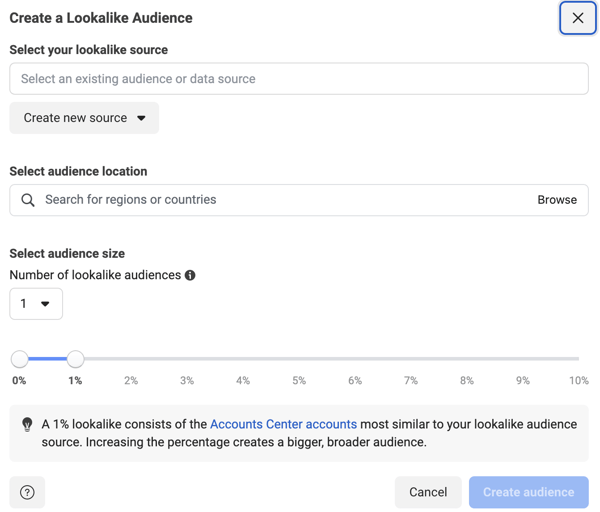
If you already have a Facebook page with a decent fan base, Facebook’s “Audience Insights” feature will tell you the demographics and psychographics of your existing audience. This way when you’re building your next campaign, you can either stick with these already established audience features, or you can tweak your desired audience if you want to focus on a specific type of person. Facebook’s “Page Insights” feature will also tell you who is actually engaging with your posts, so you know where to focus your energy when building your campaign.
You may have to tweak your audience depending on the campaign
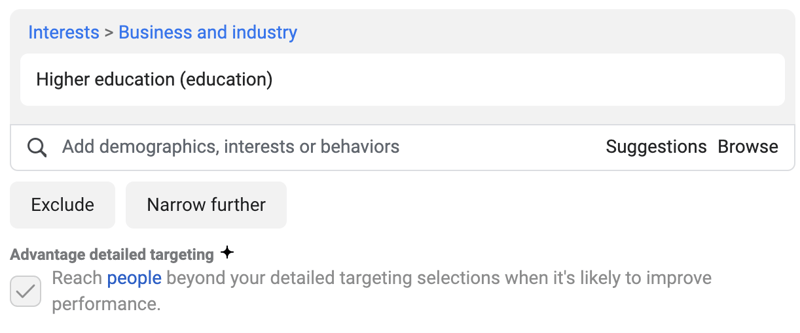
Say you’re having a one-day open house event on campus and you want to advertise it to potential students on Facebook. If your school is in Virginia, it would be counterproductive to advertise it to people in California, even if some of them may fit the profile of your ideal student. For this type of campaign, you’d probably want to put more focus on location demographics than you would otherwise. But if you want to feature that new online program you just launched, audience location may not be as big of a factor.
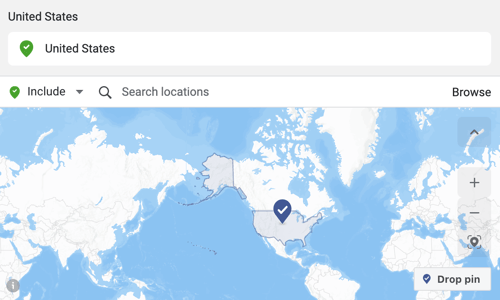
To better think through who you want to target with each ad campaign, start by asking what the goal of that campaign is. An event ad will definitely be more location and interest-based in terms of audience and may list some event details on the ad. A brand awareness ad, on the other hand, may have a broader audience and be more design-focused, to draw attention to your school. Tailoring your ads to a more refined audience will save you money and provide you with more accurate data. Using this data to determine what personas are more likely to convert will make creating ads in the future easier and more efficient.
Post sparingly to avoid fatigue
Over the past couple years, Facebook has cracked down on advertisers and what types of content they’re allowed to push out. A high volume of unpaid content will get you less attention and way fewer conversions than it would have in 2009 on Facebook. Facebook even penalizes companies who post too many “clickbait” or “recruitment” type posts (ads that just try to get clicks without offering anything in return). It’s recommended to keep an ad frequency below 2.5/per user, meaning you don’t want to oversaturate your audience with the same ads. Adjust your ad creative and ad offer appropriately to ensure you’re not creating ad fatigue for your target audience.
Incorporate high-quality content to engage your target audience
Keep your target audience engaged with a variety of ad creative and ad types that showcase quality content. Native videos on Facebook are especially effective, as they autoplay when users scroll through their News Feed on both mobile and desktop. Videos should be intriguing from the get-go and on the shorter side. For example, a video ad over 15 seconds has a higher abandon rate. If you can really capture your audience’s attention in those first critical seconds, statistics show that 65% of users who view the first three seconds of a video are likely to watch it for up to 10 seconds. Adding captions to these videos so users don’t have to unmute is a bonus feature that could get you more conversions. And paying for these ads is better than not by far; Facebook says it’s wise to assume that your organic reach will someday arrive at zero, so it’s becoming more important than ever to have an effective ad strategy.
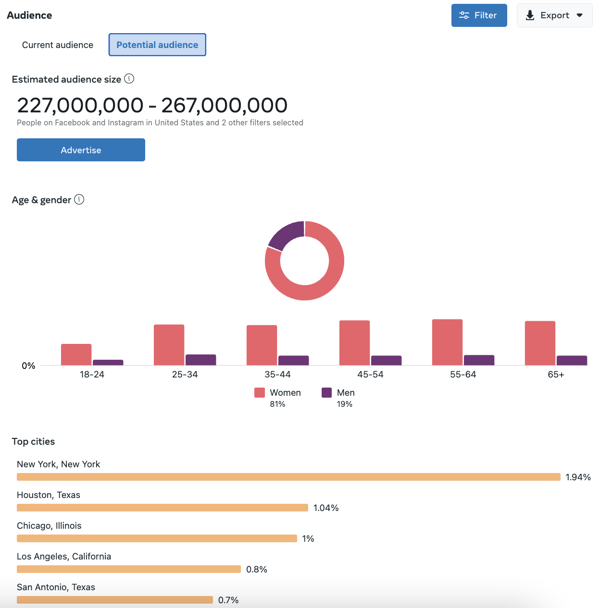
Facebook offers a wide variety of tools to help you build successful ad campaigns with the best target audience possible. You’re going to advertise with them differently now than you did even just three or four years ago, but the bright side is your ads will be of higher quality and can then be pushed out to your ideal target audience.
Need help setting up a successful paid social ad campaign? We can help! Reach out to us for more information to help set you up for success.
Find Out the Freshest Industry Benchmarks
Do you know how prospective students are engaging with email? How are virtual events affecting recruitment? Are you considering all three prospective student stages when creating content? Look no further! See how your institution stacks up against other schools across these primary marketing tactics.
Download our free guide, DD’s Deep Dive: Enrollment Marketing Benchmarks Report to learn:
- Benchmark data for four primary marketing tactics: event marketing, email marketing, digital advertising, and content marketing
- New behaviors of prospective grad students as they research and journey through the applicant funnel from initial interest to application completion
- Specific insights on which tactics are the most effective in engaging and converting prospects at all stages
.jpg?width=286&height=190&name=sam%20and%20matt%20(1).jpg) EBOOK
EBOOK
See how schools are using HubSpot for their enrollment marketing
Service Categories: Enrollment Marketing, Digital Advertising
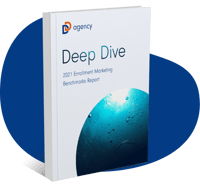


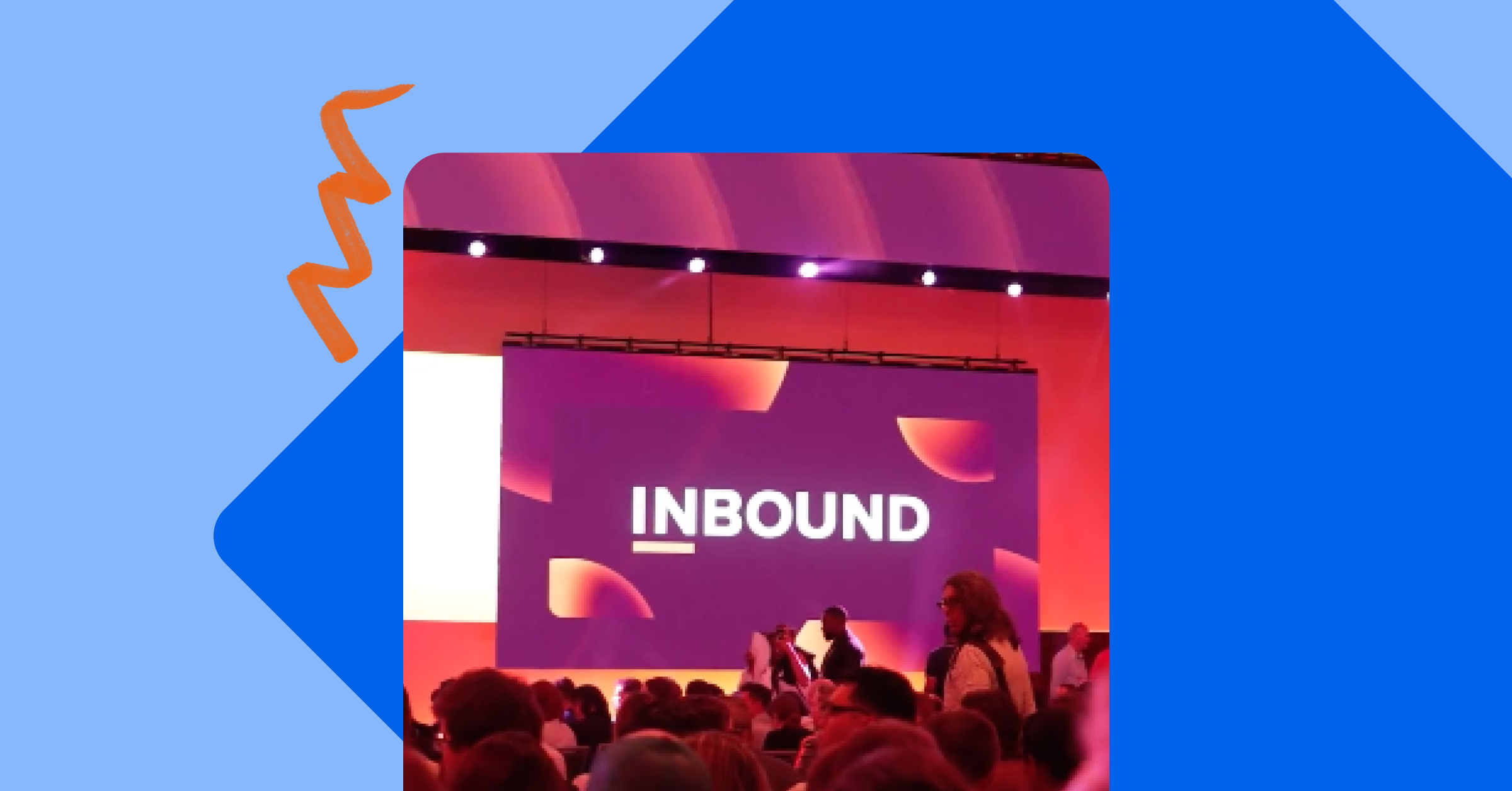





.png)